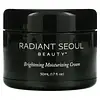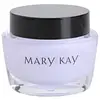What's inside
What's inside
 Key Ingredients
Key Ingredients

 Benefits
Benefits

 Concerns
Concerns

 Ingredients Side-by-side
Ingredients Side-by-side

Water
Skin ConditioningGlycerin
HumectantCetyl Ethylhexanoate
EmollientButylene Glycol
HumectantMethylpropanediol
SolventNiacinamide
SmoothingCaprylic/Capric Triglyceride
MaskingCyclopentasiloxane
EmollientDimethicone
EmollientCyclohexasiloxane
Emollient1,2-Hexanediol
Skin ConditioningHydrogenated Polyisobutene
EmollientPolyacrylate-13
Polysorbate 20
EmulsifyingPalmitic Acid
EmollientAmmonium Acryloyldimethyltaurate/Vp Copolymer
Betaine
HumectantButyrospermum Parkii Butter
Skin ConditioningPolyisobutene
Stearic Acid
CleansingDimethicone/Vinyl Dimethicone Crosspolymer
Skin ConditioningXanthan Gum
EmulsifyingSorbitan Isostearate
EmulsifyingEthylhexylglycerin
Skin ConditioningAdenosine
Skin ConditioningMyristic Acid
CleansingArachidic Acid
CleansingLauric Acid
CleansingDisodium EDTA
Phenoxyethanol
PreservativeParfum
MaskingWater, Glycerin, Cetyl Ethylhexanoate, Butylene Glycol, Methylpropanediol, Niacinamide, Caprylic/Capric Triglyceride, Cyclopentasiloxane, Dimethicone, Cyclohexasiloxane, 1,2-Hexanediol, Hydrogenated Polyisobutene, Polyacrylate-13, Polysorbate 20, Palmitic Acid, Ammonium Acryloyldimethyltaurate/Vp Copolymer, Betaine, Butyrospermum Parkii Butter, Polyisobutene, Stearic Acid, Dimethicone/Vinyl Dimethicone Crosspolymer, Xanthan Gum, Sorbitan Isostearate, Ethylhexylglycerin, Adenosine, Myristic Acid, Arachidic Acid, Lauric Acid, Disodium EDTA, Phenoxyethanol, Parfum
Water
Skin ConditioningDimethicone
EmollientCyclopentasiloxane
EmollientGlycerin
HumectantPropylene Glycol
HumectantCyclohexasiloxane
EmollientBetaine
HumectantCamellia Sinensis Extract
AntioxidantAlgae Extract
EmollientTocopheryl Acetate
AntioxidantSodium PCA
HumectantProline
Skin ConditioningArginine
MaskingGlycine
BufferingAlanine
MaskingLysine
Skin ConditioningGlutamic Acid
HumectantSerine
MaskingThreonine
Sorbitol
HumectantButylene Glycol
HumectantHydrogenated Polyisobutene
EmollientGlyceryl Polyacrylate
C13-14 Isoparaffin
EmollientPolyacrylamide
PEG-12
HumectantCarbomer
Emulsion StabilisingLaureth-7
EmulsifyingDisodium EDTA
Benzophenone-4
UV AbsorberTriethanolamine
BufferingPhenoxyethanol
PreservativeMethylparaben
PreservativeDMDM Hydantoin
PreservativeCI 60725
Cosmetic ColorantCI 16035
Cosmetic ColorantWater, Dimethicone, Cyclopentasiloxane, Glycerin, Propylene Glycol, Cyclohexasiloxane, Betaine, Camellia Sinensis Extract, Algae Extract, Tocopheryl Acetate, Sodium PCA, Proline, Arginine, Glycine, Alanine, Lysine, Glutamic Acid, Serine, Threonine, Sorbitol, Butylene Glycol, Hydrogenated Polyisobutene, Glyceryl Polyacrylate, C13-14 Isoparaffin, Polyacrylamide, PEG-12, Carbomer, Laureth-7, Disodium EDTA, Benzophenone-4, Triethanolamine, Phenoxyethanol, Methylparaben, DMDM Hydantoin, CI 60725, CI 16035
Ingredients Explained
These ingredients are found in both products.
Ingredients higher up in an ingredient list are typically present in a larger amount.
Betaine is a common humectant (a substance that promotes retention of moisture). It's known to be gentle on the skin and can help balance hydration.
This ingredient is best for improving hydration and soothing irritated skin. Studies also show it helps even out skin tone.
Fun fact: Betaine is naturally created in the skin and body. The kind found within cosmetic products can be either plant-derived or synthetic.
Another name for betaine is trimethylglycine.
Learn more about BetaineButylene Glycol (or BG) is used within cosmetic products for a few different reasons:
Overall, Butylene Glycol is a safe and well-rounded ingredient that works well with other ingredients.
Though this ingredient works well with most skin types, some people with sensitive skin may experience a reaction such as allergic rashes, closed comedones, or itchiness.
Learn more about Butylene GlycolCyclohexasiloxane is a type of silicone more commonly known as D6. It is an emollient and solvent.
Cyclohexasiloxane is used to evenly distribute ingredients throughout the product. When applied to the skin, Cyclohexasiloxane evaporates and leaves behind a silky feel.
As an emollient, it can help the skin feel soft and hydrated. It is also used to reduce frizz in hair products.
Learn more about CyclohexasiloxaneCyclopentasiloxane, or D5, is a silicone used to improve texture of products and trap moisture.
D5 is considered lightweight and volatile. Volatile means it evaporates quickly after application. Once evaporated, D5 leaves a thin barrier that helps keep skin hydrated.
It is also an emollient. Emollients help soften the skin and prevent water loss. Silicones create a silky texture in products. D5 helps other ingredients become more spreadable.
Studies show D5 is safe to use in skincare products. We recommend speaking with a skincare professional if you have concerns.
Learn more about CyclopentasiloxaneDimethicone is a type of synthetic silicone created from natural materials such as quartz.
What it does:
Dimethicone comes in different viscosities:
Depending on the viscosity, dimethicone has different properties.
Ingredients lists don't always show which type is used, so we recommend reaching out to the brand if you have questions about the viscosity.
This ingredient is unlikely to cause irritation because it does not get absorbed into skin. However, people with silicone allergies should be careful about using this ingredient.
Note: Dimethicone may contribute to pilling. This is because it is not oil or water soluble, so pilling may occur when layered with products. When mixed with heavy oils in a formula, the outcome is also quite greasy.
Learn more about DimethiconeDisodium EDTA plays a role in making products more stable by aiding other preservatives.
It is a chelating agent, meaning it neutralizes metal ions that may be found in a product.
Disodium EDTA is a salt of edetic acid and is found to be safe in cosmetic ingredients.
Learn more about Disodium EDTAGlycerin is already naturally found in your skin. It helps moisturize and protect your skin.
A study from 2016 found glycerin to be more effective as a humectant than AHAs and hyaluronic acid.
As a humectant, it helps the skin stay hydrated by pulling moisture to your skin. The low molecular weight of glycerin allows it to pull moisture into the deeper layers of your skin.
Hydrated skin improves your skin barrier; Your skin barrier helps protect against irritants and bacteria.
Glycerin has also been found to have antimicrobial and antiviral properties. Due to these properties, glycerin is often used in wound and burn treatments.
In cosmetics, glycerin is usually derived from plants such as soybean or palm. However, it can also be sourced from animals, such as tallow or animal fat.
This ingredient is organic, colorless, odorless, and non-toxic.
Glycerin is the name for this ingredient in American English. British English uses Glycerol/Glycerine.
Learn more about GlycerinHydrogenated Polyisobutene is a synthetic polymer. Polymers are compounds with high molecular weight. Hydrogenated Polyisobutene is an emollient and texture enhancer.
In one study, Hydrogenated Polyisobutene showed better skin hydration levels than Caprylic/Capric Triglyceride. As an emollient, it helps keep your skin soft and hydrated by trapping moisture in.
Hydrogenated Polyisobutene is often used as a mineral oil replacement.
Learn more about Hydrogenated PolyisobutenePhenoxyethanol is a preservative that has germicide, antimicrobial, and aromatic properties. Studies show that phenoxyethanol can prevent microbial growth. By itself, it has a scent that is similar to that of a rose.
It's often used in formulations along with Caprylyl Glycol to preserve the shelf life of products.
Water. It's the most common cosmetic ingredient of all. You'll usually see it at the top of ingredient lists, meaning that it makes up the largest part of the product.
So why is it so popular? Water most often acts as a solvent - this means that it helps dissolve other ingredients into the formulation.
You'll also recognize water as that liquid we all need to stay alive. If you see this, drink a glass of water. Stay hydrated!
Learn more about Water